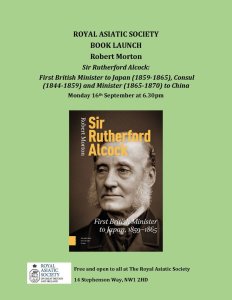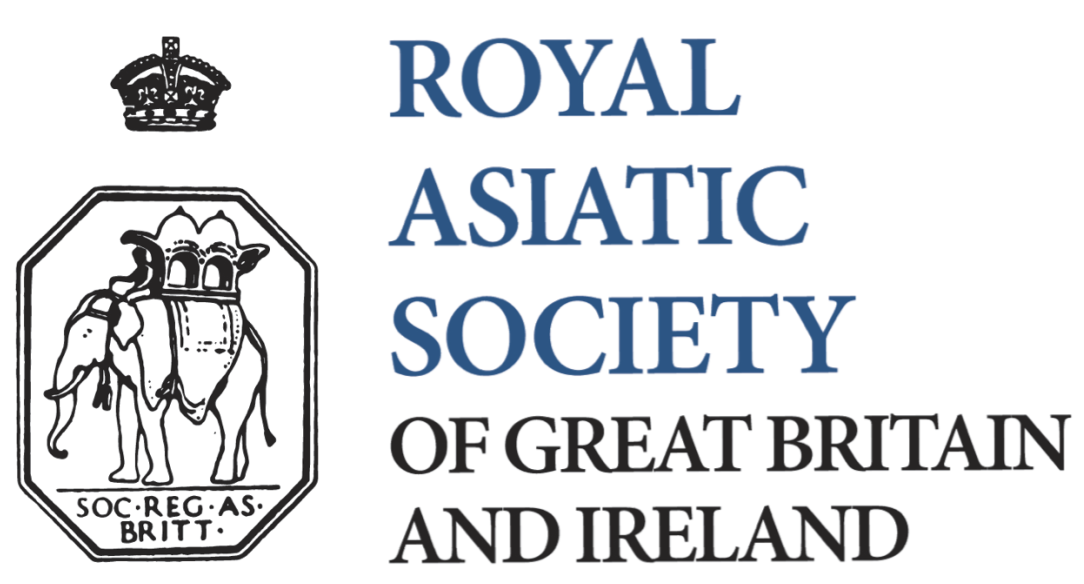September 2024 – Lectures and Events
The Society is programming an interesting lecture series for 2024-2025, the start of which will soon be upon us. So this week the blogpost will highlight the lectures and events coming up in the first few weeks of September.
Our first event will be on Friday 6 September, 6.30 pm, when renowned mask-carver Kitazawa Hideta will be joined by the author and producer of English-language noh, Jannette Cheong, to explore the process of designing, carving and working with noh masks. Kitazawa is unique in the noh world in making new masks for innovative and experimental Noh pieces, including English-language noh, as well as producing classical noh and kyogen (nohgaku) masks. He will demonstrate the different stages of carving, offering a rare opportunity to understand how iconic noh masks are made for both traditional and contemporary noh.

Kitazawa Hideta is a wood sculptor and noh mask maker based in Tokyo. He learned traditional wood carving from his father and later studied noh mask carving. He currently produces classical noh and kyogen masks and has been designated a master craftsman by the Tokyo Metropolitan government. Kitazawa has also created numerous shinsaku “new” masks for foreign language noh productions, notably those of Theatre Nohgaku, as well as for other noh influenced plays. He has given workshops and demonstrations in Japan and internationally and a book on his work entitled Noh and Kyogen Masks by Jannette Cheong and Richard Prestel will be published by Prestel in Autumn 2024. This will be available to purchase on the evening.
Jannette Cheong is a poet, playwright, designer and Theatre Nohgaku-affiliated artist. London born, she has been involved with education and artistic collaborations internationally for almost 40 years. She is the author of the English Noh Pagoda, the first English Noh using traditional Noh techniques written by a British person, toured by the Oshima Noh Theatre/Theatre Nohgaku (Europe 2009, Asia 2011). Her ballet-Noh-opera collaborative piece, Opposites-InVerse, was performed for Matsui Akira’s tribute programme: Noh Time Like the Present, London (2017). Her English Noh Between the Stones (Europe, 2020) was again toured by Oshima Noh Theatre/Theatre Nohgaku.
This discussion and demonstration is part of the wider Nohgaku outreach and education programme – full details of which can be found here.
~ ~ ~ ~ ~
On Thursday 12 September, 6.30 pm, Professor Robert Arnott will give an online lecture on A Century of the Harappans: Celebrating the Discovery of a Civilisation. The existence of the complex urban society of the Indus or Harappan Civilisation remained unknown until 20 September 1924 when Sir John Marshall, Director-General of the Archaeological Survey of India from 1902 to 1928, announced its discovery in the pages of the Illustrated London News. He named it the Indus Civilisation, because the finds came from two sites in the Upper and Lower Indus Valley – Harappa, near Lahore in the Punjab and Mohenjo-daro in Sindh, six hundred kilometres to the south. The fieldwork was led by the Indian archaeologists R. B. Daya Ram Sahni at Harappa in 1921 and from 1923, and Rakhal Das Banerjee and Madhu Sarup Vats at Mohenjo-daro from 1922.The civilisation was dated to the middle and late third millennium and the early part of the second millennium BCE. Since those first discoveries, a century ago, archaeological research both in modern India and Pakistan and farther afield in Afghanistan and the Persian Gulf has continued to expand our knowledge.

Professor Arnott is an archaeologist, palaeoepidemiologist and medical historian; he has excavated in Greece, Italy and Turkey and is an authority on disease and medicine in the Aegean and Anatolian Bronze Age civilisations, 2000-1100 BCE. His more recent interests include prehistoric India, particularly the health, disease and medicine in the Indus Civilisation, 2600-1900 BCE. Before retirement he was Professor of the History and Archaeology of Medicine, Director of the Centre for the History of Medicine, Sub-Dean of the School of Medicine and Public Orator of the University of Birmingham. He continues to be an Associate Fellow of Green Templeton College, University of Oxford.
Please note this lecture will only be held online. Please contact Matty Bradley (mb@royalasiaticsociety.org) to obtain the details for joining the lecture.
~ ~ ~ ~ ~
Our next lecture will be on Monday 16 September, 6.30 pm. when Dr Robert Morton will lecture on his new book, Sir Rutherford Alcock: First British Minister to Japan (1859-1865), Consul (1844-1859) and Minister (1865-1870) to China. The son of a village doctor, Rutherford Alcock trained in medicine and became a battlefield surgeon, working in Portugal and Spain during the civil wars in the 1830s. He then entered the consular service, serving in China, and becoming British Minister (ambassador) to Japan and then China. This progression could be considered unique, possibly even bizarre, especially as Alcock claimed that he specifically did not want each senior position he was given. Nonetheless, he was an important figure in Britain’s relations with Japan and in introducing Japan’s arts and crafts to the UK, in addition to playing a central role in Britain’s relationship with China. He expressed ambivalence about Britain’s position in East Asia as he contended with intractable issues such as the opium trade and how to punish attacks on British interests without starting a war. Dr Morton’s book fills a gap in the study of Japan’s opening to the West from a British perspective, as well as Britain’s relationship with East Asia as a whole, as shown through the life of Rutherford Alcock.

Dr Robert Morton is a Professor at Chuo University, Tokyo, Japan. He is the author of the prize-winning A.B. Mitford and the Birth of Japan as a Modern State and A Life of Sir Harry Parkes.
~ ~ ~ ~ ~
On Wednesday 16 September, 6.30 pm, we will be hosting another event as part of the Nogaku education and outreach programme. Akira Matsui, master actor-teacher of the Kita School of Japanese classical noh theatre, will be interviewed by Dr Margaret Coldiron on his life and work. Matsui was born in 1946 and began studying noh at the age of seven, becoming, age 12, an apprentice to Kita Minoru, the 15th generation of noh masters of the Kita School (one of the five guilds of shite main role actors). From his firm foundation in tradition, Matsui has experimented in intercultural fusions. He has acted in productions of plays by Shakespeare, W.B. Yeats, and Beckett, and has written plays based on Rashoman and Hoichi. Together with American noh composer-performer Richard Emmert, he has created a series of English Noh including St. Francis, At the Hawk’s Well, and Eliza. In addition, he has choreographed noh-style dances to jazz ballads and to poetry by T.S. Eliot. In 1998, he was designated an Important Intangible Cultural Asset by the Japanese government. In 2016, Matsui was awarded an honorary doctorate by Royal Holloway, University of London, in recognition of his status as a Noh master and for his long record of achievement in bringing Noh to new international audiences.

Dr Margaret Coldiron is a theatre director, performer, teacher and a specialist in Asian performance and masks. She is the author of Trance and Transformation of the Masked Actor in Japanese Noh and Balinese Dance Drama (Mellen Press, 2004) and has published widely on masks, Asian and intercultural performance and actor training.
~ ~ ~ ~ ~
On Monday 23 September, 6.30 pm, Dr Donna Brunero will lecture on Visiting the ‘Liverpool of the East’: Singapore’s place in tours of Empire. The lecture will explore Singapore’s reputation as the Liverpool of the East and its role in the British maritime empire through the lens of two important cruises; that of the Royal Tour (led by HMS Ophir) in 1901; and the 1923-4 Special Service Squadron Tour (led by HMS Hood). The lecture will examine the Tours’ receptions in Singapore and what may be understood from these concerning Singapore’s communities.

Dr Donna Brunero is a Senior Lecturer in the Department of History, National University of Singapore, researching and teaching on the British empire in Asia, maritime history and the connections between the two. Her recent publications include Britain’s Imperial Cornerstone in China: The Chinese Maritime Customs Service, 1854-1949 (Routledge, 2006), Empire in Asia: A New Global History Vol.2 The Long Nineteenth Century, (Bloomsbury Press, 2018), co-edited with Brian P. Farrell, and Life in Treaty Port China and Japan (Palgrave, 2018), co-edited with Stephanie Villalta-Puig.
~ ~ ~ ~ ~
Our final event in September will be held on Thursday 26 September, 6.30 pm, when Alice Casalini will lecture on The art of crossing over: Gandhāran pathways to nirvāṇa. The art of Gandhāra, a region stretching across modern-day Pakistan and Afghanistan, has often been heralded as prime example of proto-globalization with its rich and syncretic visual vocabulary, borrowing from Hellenistic, Iranian and Indian models suggesting this interpretation Aquatic imagery in Gandhāra such as nereids, tritons and other sea monsters have been commonly utilised to exemplify this. In her talk, Alice Casalini will take a different approach, asking what the role and function of such aquatic imagery was within a Buddhist context. Through careful analysis of several panels from the site of Andan Dheri, in the Swat Valley, and a series of preliminary reconstructions of the original architectural context of those panels depicting sea creatures, she will show how aquatic imagery was a fundamental part of a specific iconographic program centred around metaphors of water-crossing—indeed, one of the most enduring and popular metaphors of spiritual refinement meant to lead the devotee towards nirvāṇa.

Alice Casalini received her MA in Chinese Studies from Ca’ Foscari University of Venice and trained as an archaeologist at the Department of Archaeology and Museology of Peking University and with the Italian Archaeological Mission in Pakistan. She is currently a PhD candidate in Art History at the University of Chicago.
~ ~ ~ ~ ~
All these lectures and events (apart from that of Professor Robert Arnott) will be held at the Society’s premises. They are free and all are welcome to attend. In addition, they will be available to participate online. If you wish to obtain the link for any of the events, please contact Matty Bradley (mb@royalasiaticsociety.org).

